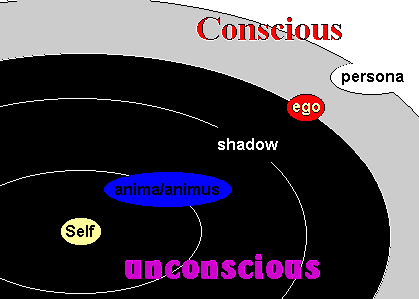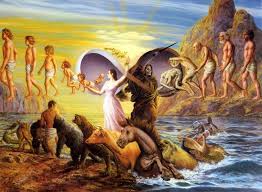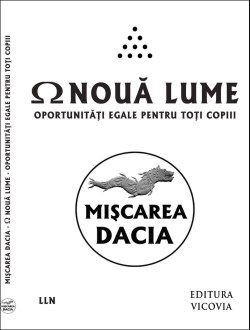 Vă invit să vă alăturaţi grupului Facebook Mişcarea DACIA, ce-şi propune un alt fel de a face politică!
Vă invit să vă alăturaţi grupului Facebook Mişcarea DACIA, ce-şi propune un alt fel de a face politică!Citiţi partea introductivă şi proiectul de Program, iar dacă vă place, veniţi cu noi !
O puteţi face clicând alături imaginea, sau acest link
Posts Tagged ‘Jung’
Hyperian History Of The World (20th Century, Part 2)
Hyperian History Of The World (20th Century, Part 2)
The chaos of 20th century science showed clearly all of the problems with human academia. The ancient Greek philosophers had been very aware of their own individual existence as being one individual part of the whole of existence, and the temple of Apollo at Delphi had been inscribed with the words ‘Know Thyself’, showing how much importance had been placed on understanding one’s own self in order to understand the rest of existence.
Unfortunately, since then human academia had become severely fractured and splintered, almost certainly due to the malevolent effects of irrational religions and the dominance of the old world powers over humanity. The Greek philosophers were not only philosophers, but also scientists, mathematicians, psychologists, politicians, artists, all in one. 20th century academics, on the other hand, may have been experts in one field, but tended to be utterly ignorant of other fields, thus severely limiting what they were able to understand about their chosen field. Without the right philosophical underpinning, science had descended into madness, a madness from which it has still yet to emerge.
A big problem was that scientists did not ‘know themselves’ as per the Apollonian inscription. Scientists tended to be extrovert empiricists, looking out into the physical world around them, making observations with their senses and drawing their conclusions based only on this. This had the effect of creating a worldview which alienates the universe from the individuals who inhabit it. Quantum Mechanics was entirely founded on the ‘observer’ yet at no point was the ‘observer’ given any kind of definition. Scientists could make no sense of the mind of the individual, and indeed, many scientists didn’t even acknowledge the existence of such a mind, given that it was not observable.
The main reason scientists failed to appreciate their own shortcomings, was because of a major lack of psychological understanding. It was ironic then, that at about the same time as Relativity and Quantum Mechanics were being developed, Psychology was becoming a major academic discipline, thanks mostly to two giants of the field, Sigmund Freud and Carl Jung.
Sigmund Freud developed a model of the mind, or the psyche, consisting of three major parts, the Id, the Ego and the Super Ego.
The Id is the more primitive, instinctual part of the psyche. This is the part of us which selfishly seeks pleasure and is mostly unconscious. All of our base instincts, all of our primitive desires, these are of the Id. The Id wants what it wants, and it wants it now. The Id has no regard for the desires of anyone else, indeed, it is hardly even aware of the existence of anyone else, such is its selfishness. To get what it wants, the Id will do anything, it will fight off anyone or anything that gets in its way. The Id has a very narrow view of the world, seeing its way only to the next source of pleasure. It has no concept of the wider world, no concept of the past or the future. It lives permanently in the moment and seeks only to maximise the pleasure it feels in that moment.
The Id is contrasted by the Super Ego. The Super Ego is selfless, and is concerned with the world at large. The Super Ego is very aware of other people and of the rules and conventions of the society in which it lives. It wishes to live by those rules and conventions and to do no harm to anyone else. More than this, the Super Ego seeks to perfect the world around it and everyone else in it. It wants what is best for everyone and it will help others often at its own expense. It is highly aware of the past and of the future; it learns from the past in order to create a better future.
The Ego is the part of the psyche which mediates between the two others. The desires of the Id so often contradict those of the Super Ego and vice versa, therefore the Ego has a very difficult job. Most of the time, the Ego makes its decisions quickly or even unconsciously, resulting in compromises which don’t particularly satisfy either the Id or the Super Ego. If the Id and the Super Ego represent the fracture of the psyche, the Ego, when it operates in this manner, doesn’t really heal the fracture at all but, rather, it merely suppresses both the Id and the Super Ego and this only really serves to maintain the current state of fracture. Most people are dissatisfied with their lives, their Id is not receiving its pleasure, yet neither is their Super Ego contributing to creating a better world.
In order for the Ego to do a better job, it must become more conscious of what it is doing. Then, rather than merely finding a compromise between the Id and Super Ego, it can instead seek a higher synthesis of the two, a state which satisfies both of them. This would result in progression, upward motion towards a higher state of existence.
We all have our unconscious Id selfishly striving for pleasure, and we all have our Super Ego, selflessly hoping to please everyone else in society. The conflict between the two must be addressed consciously by the Ego which must not merely compromise, but must find a higher Synthesis, just as in Hegel’s Dialectic. Only a highly conscious Ego can raise the Psyche to a higher level, healing the fracture and attaining to Unity.
Freud’s great rival was Carl Jung. Jung developed a model of the psyche more complicated than that of Freud. Like Freud, Jung recognised that the psyche contained elements that were both conscious and unconscious, and, like Freud, he recognised that there was conflict between various elements of the psyche, conflict that could be resolved, leading to a higher state of psychic health. Jung recognised, as per the Dialectic, that opposing elements had to be synthesised in order to lead to a higher level. This was a process Jung called Individuation.
For Jung, the Ego is the centre of our consciousness (yet not part of the unconscious). This is our everyday sense of who we are in this lifetime, a constant flow of experiences based upon our interaction with the physical world in our immediate surroundings. The Ego responds to the world around it using four functions: Sensing, Intuition, Feeling and Thinking. It also acts both introvertedly and extrovertedly. An individual Ego tends towards some of these functions more than others, leading to differing personality types.
Sensing is opposed by Intuition and Feeling is opposed by Thinking. Someone who is a sensing type is lees likely to use intuition and someone who is a feeling type is less like to use thinking, yet this is further complicated by whether they tend towards introversion or extroversion.
Based on these functions, the Ego responds to life in the physical world, yet it is only a small part of the whole psyche. The Ego only makes use of information which it has an immediate use for. Everything else is pushed down into the unconscious, or more specifically according to Jung, the Personal Unconscious.
Jung also developed the concept of what he called the Collective Unconscious. Whereas the Personal unconscious is specific to each individual, made up of all our experiences which have not been made conscious, the Collective Unconscious is a sort of psychological ‘blueprint’ common to all of us.
Jung did not believe that our minds were ‘blank’ when we are born and then are populated with ideas as we grow, rather, he realised that our minds all contain the same pieces of information from the start, information which is experienced differently for each of us depending on our experiences.
The Collective Unconscious is populated with what Jung called Archetypes. Every mind contains the same archetypes, we simply experience them in different ways, based on our differing lives and culture etc. Yet we recognise the archetypes in others, archetypes such as the Mother, the Father, the Teacher, The Wise Old Man, the Ally, the Enemy, the Lover etc.
Jung also identified other elements of the Psyche:
1) The Persona. This is the version of yourself that you present publicly to other people. It is the part of you which conforms to the customs of your society. We all have elements of our psyches which society might deem to be unacceptable, and we hide these things behind the Persona, or mask. The Persona is a thin veil yet it is easy to identify too strongly with it, forgetting who you really are.
2) The Shadow. Many of the elements that we hide behind the Persona, the things which society deems unacceptable, or the aspects of ourselves which we do not like, are all repressed into the Shadow. Therefore, our Shadow is the complete opposite of the Persona, an aspect of the psyche from which we are alienated. Often, we recognise elements of our shadow in others, causing us to strongly dislike them when, in fact, we are simply recognising something of ourselves in them, something which we do not like about ourselves. This is called projection. A crucial part of individuation is to integrate the Shadow, to realise that these elements are still a part of you and to overcome the alienation we feel towards our Shadow.
3) The Anima/Animus. This is the part of the psyche based upon the opposite sex, Anima in a man and Animus in a woman. To identify as one gender is to lead a one-sided existence. Like the Shadow, the Anima/Animus must be integrated in order to heal the fracture of the psyche. Also like the Shadow, we project the contents of our Anima/Animus onto others of the opposite sex, recognising in them the elements of our ideal woman or man, when really these are elements of ourselves which we must integrate.
Finally, Jung spoke of the Self. The Self is the deepest part of our psyche and the part most alienated from the Ego, yet the Self is indeed our True Self, it is who we truly are. Prior to individuation, the Self would seem utterly strange and foreign to us, we would never believe it to be our true self, so alienated are we from it. Yet after successful individuation, after integrating the Shadow and the Anima/Animus and all the other aspects of the psyche, our identification shifts from the Ego to the Self, or, rather, the Self absorbs all other elements of the psyche, alienation ceases, all conflicts are resolved and we become whole, we attain to Unity.
Unfortunately, despite the highly influential work of these great psychologists, 20th century scientists, philosophers and mathematicians remained in a state of fracture, alienated and separated from one another, focused solely on their own narrow field. They failed to understand their need for each other, their need for unity, because they had failed to ‘know themselves’.
Brice Merci – hyperian
EGO
“Ego-ul nostru este doar o mică parte din ceea ce suntem, un fenomen de suprafață, vârful aisbergului. Avem rădăcini care se întind atât de adânc ca istoria umană, care nu sunt niciodată văzute sau recunoscute, dar aceste rădăcini ne hrănesc Sufletul. Trebuie să scăpăm de tirania Ego-uiui, de la amăgirea că acesta este cine suntem cu adevărat. ”
Lucas Ice
March 26, 2015 at 8:39 AM ·
Illumination shared their photo.
5 hrs ·
“Our Ego is only a small part of who we are; a surface phenomenon, the tip of the iceberg. We have roots that stretch as deep as human history that is never seen or acknowledged, but it is these roots that nourish our soul. We have to escape from the tyranny of the Ego, from the delusion that this is who we really are.”
DARWINISM
„Darwinism
În termeni Iluminişti, am putea spune că „lumea materială” este o Structură Mentală vizibilă, colectivă, produsă de toate Mințile Individuale existente. Pentru a fi mai exact, este o hologramă auto-generatoare. Totuși, este interpenetrată de o „lume imaterială” – o Structură Mentală Colectivă invizibilă. Acesta nu este altceva decât NeConștientul Colectiv Jungian (aka Singularitatea).
Interacțiunea dintre lumea mentală colectivă vizibilă (lumea materială) și lumea colectivă mentală invizibilă (NeConștientul Colectiv) este responsabilă de fenomenul jungian al Sincronicității.
NeConștientul Colectiv este stratul cosmic teleologic, căutând mereu sens.
Este prin intermediul NeConștientului Colectiv că Evoluția Darwiniană operează de fapt.
NeConștientul Colectiv generează toate mutațiile genetice semnificative în căutarea unor „vehicule fizice superioare” pe care Mintea să le poată controla. Acest proces este bineînțeles neobservat prin Simțuri, prin urmare, oamenii de știință aleg să recurgă la explicaţia lor iraţională: Întâmplarea. Neexistând Mintea pentru ei care să provoace Schimbarea, nu mai rămâne decât Întâmplarea.
Cauzalitatea Întâmplătoare este tot ceea ce poate fi invocat după ce se ignoră Cauzalitatea Mentală.
Deci, Darwinismul spune că Mutațiile Genetice Întâmplătoare produc Evoluția, când de fapt, Forțele Mentale NeConștiente și nevăzute produc în mod deliberat Mutațiile Genetice conform teleologiei şi entelehiei universale.”















